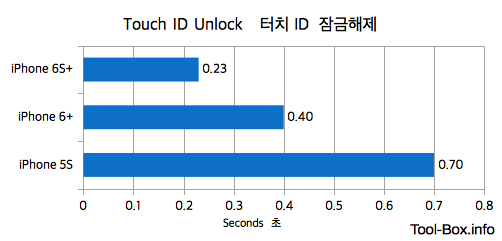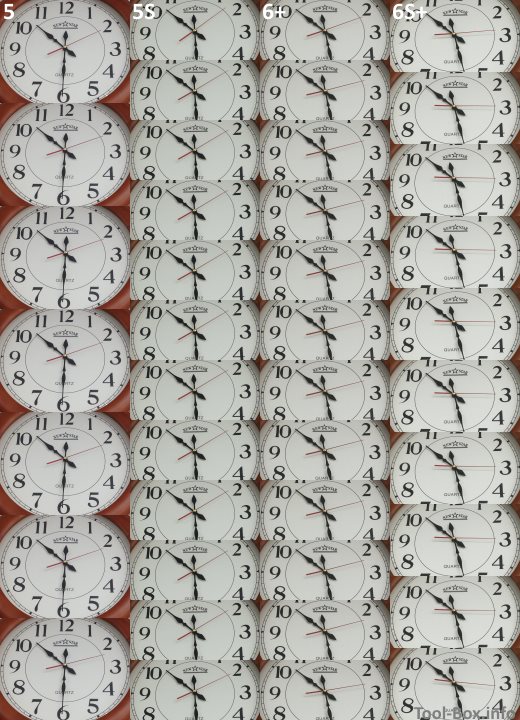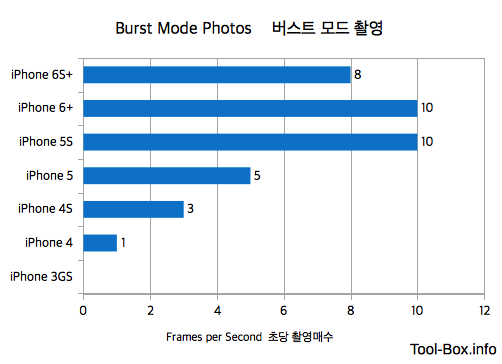Comparing iPhones: Touch ID & Burst Mode
Posted by Wesley onEver since Apple integrated a fingerprint sensor into the iPhone's home button with 5S, unlocking the phone had been quick and painless for me. The success rate is really high, and it's basically a touch-and-go experience that is faster than even sliding to unlock. Still, Apple must have thought that this could be improved further, so now there is a 3rd generation Touch ID on my iPhone 6S Plus. How does it perform?
As the video illustrates, the speed has gotten to the point where the fingerprint recognition is virtually instantaneous. Even if my finger was resting on the home button very briefly, the lock screen would disappear. Analyzing the video, this is how long each device's Touch ID sensor took to unlock.

iPhone's Touch ID unlock speed comparison
iPhone 6S Plus is nearly twice as fast as 6 Plus, taking only 0.23 seconds. 5S's performance was measured to be 0.70 seconds here, but it sometimes does get close to (but not surpass) 6 Plus's time of 0.40 seconds.
If 5S and 6 Plus's speed were "good enough", 6S Plus is bordering on "too fast". Unless you intentionally take your finger off the home button as quick as possible after you press or just use the power button, you'll miss the chance to see or interact with the lock screen most of the time. This includes loading the camera app via sliding up the lower right corner of the lock screen. It took a lot of time of getting used to.
Meanwhile, shooting burst photos is a completely different story.

Burst Mode photography testing with a clock's second hand
Burst mode, which takes photos in rapid succession so long as you're pressing the shutter button, was first introduced in iPhones with iOS 7. Before that, a long shutter press merely waited for your finger to be lifted off to take a single shot. The mode would be useful for attempting to capture a good photo when there's a lot of movement or changes.
Like I've done in the past years, I did a quick and effective measurement of the burst mode's speed by photographing an analog clock. The number of frames with the second hand at the same position equals the "frames per second(fps)" metric. Analyze this over multiple seconds to see if this is consistent, and you end up with a final number.

iPhone's Burst Mode photo speed results
And this is how each iPhones fared. iPhone 3GS is only able to run up to iOS 6, so the burst mode was not available. iPhone 4, the oldest device capable of iOS 7, only managed 1fps. But it gets better with every subsequent generation, with iPhone 5 getting 5fps. When you consider that the "true" burst mode came with 5S, both in terms of function (photo grouping and selection) and speed (10fps), this is respectable. It's also a twofold improvement from 2.5fps I got with iOS 7, so that's also a plus.
The performance was kept the same with 6 Plus, but then slows down to 8fps with 6S Plus. This is likely because of the increase in pixel count from 8 to 12 megapixels. This model does give you the option of shooting 30fps videos in 8-megapixel (4K; 3840x2160) resolution anyway, so it's not a big setback. Still, I would have liked to have the 10fps speed retained for the native resolution.
The story that you saw here echoes what the earlier articles have already found. One, hardware and software improvements in each generation have pushed the envelope further and further, bringing tangible speed gains in individual features. Two, the camera in the 6S Plus still seems unremarkable except for the higher pixel count.
Defined tags for this entry: camera, iPhone 3GS, iPhone 4, iPhone 4S, iPhone 5, iPhone 5S, iPhone 6 Plus, iPhone 6S Plus, Touch ID